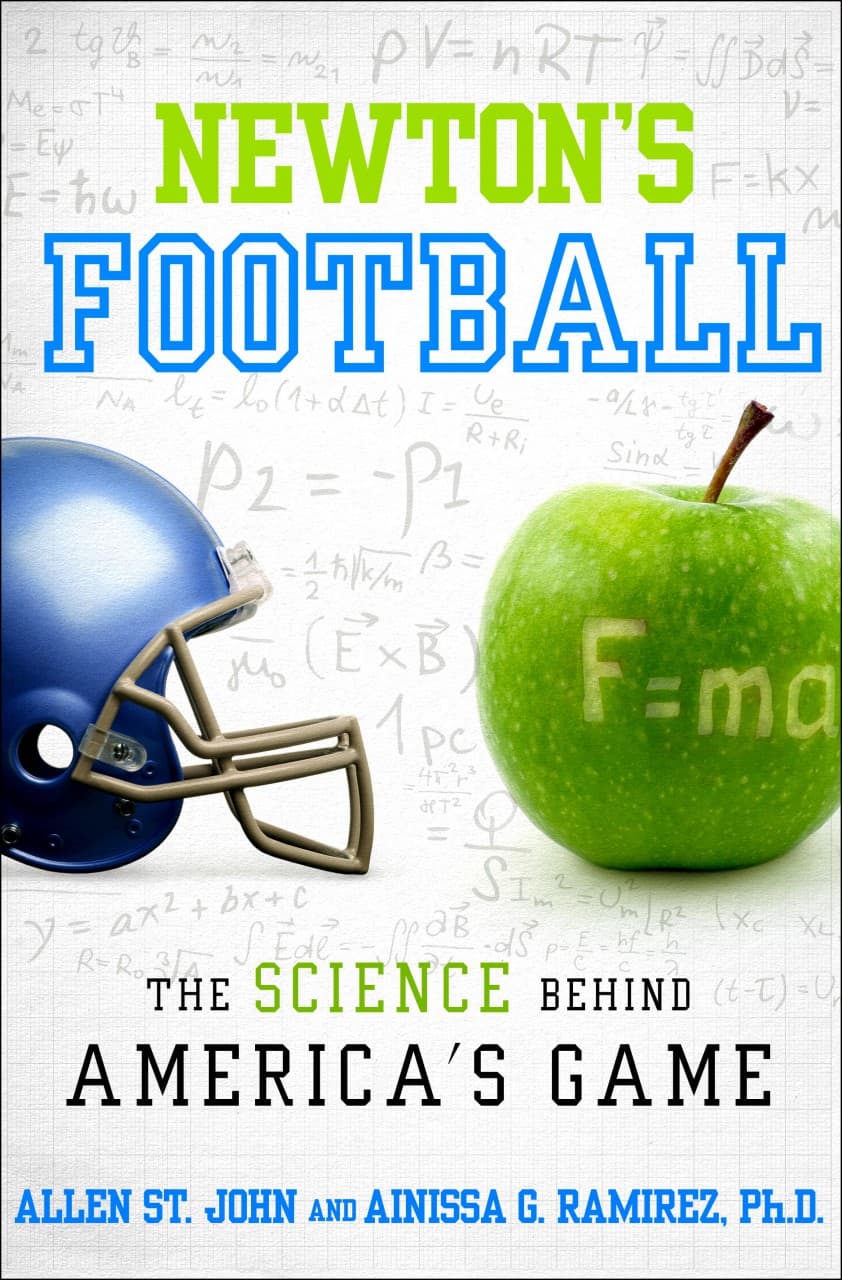Advertisement
'Newton's Football' Explores The Science Of The Sport
ResumeThe sport of football is more than players hitting each other. In fact, there is a lot of physics that goes into the sport. In Newton's Football: The Science Behind America's Game, authors Allen St. John and Ainissa Ramirez explore the unexpected science behind the game.
Highlights from Bill's conversation with Allen St. John and Ainissa Ramirez
BL: Allen, first of all, how important is the shape of the football?
AS: The shape of the football is really important. Basically the word you are looking for is not only whimsy — which is a lovely word — but randomness. The football is shaped the way it is because it's actually the shape of a pigs bladder. Because that's what the very first footballs were made out of. And the fact is, over the years it didn't get rounder as some other balls like soccer balls, for example.
It actually got more prolate because, one, it was easier to hold on to carry and later on it was easier to throw. The fact is though what happens with that ball is when you drop it — it's really unpredictable. It's not clear exactly where the ball's going to bounce. It may bounce straight back to you. It may squirt in any direction, and that really adds a sort of important element to the game.

BL: Ainissa, in the chapter titled "How is a Quarterback Like Your Laptop," you maintain that Bill Walsh -- credited with developing the highly successful West Coast offense when he was coaching the San Francisco 49ers — was trying to get his quarterbacks to think like a computer. How so?
AR: Well computers are based on ones and zeros. Yes and no. And making it simple for a quarterback to understand where a ball should go reduces the pressure of an already stressful situation. Before the thinking was, "find an open man--and by the way you have very huge guys coming after you."
But if you have a progression of three options and you know what order they're going to happen in, it makes life easier. Is option one available? Yes or no. If it's no you move on to option two and further. This kind of thinking is called binary thinking, and it's something that computers do all the time, so we made the parallel between how you're able to think in a systematic and simple way which is also what a computer does.
BL: Allen, you discovered that whereas in 1980 there were three NFL players who weighed as much as 300 pounds, as of 2012, there were 461 such players. Talk a little bit about how those numbers have changed the physics of pro football.
AS: Yeah, I mean that is an awful lot of Big Mac's. And you know, as Ainissa explained, when the environment changes, then basically the players that are going to succeed in that environment change, too. And there were a whole variety of things that were happening in football between 1980 and now. Anything from rule changes --basically offensive linemen all of a sudden could use their hands and by using their hands they therefore didn't need to use their feet as much as they did before.
And beyond that there were a whole variety of things meant to really make the game more exciting, and specifically those were rule changes that basically enhance passing. Those very big players--those offensive linemen who are not only 300 pounds, but guys getting up to 400 pounds — those guys were all about blocking.
BL: What other kinds of out-of-the-box thinking should we be applying to football today?
AR: What we learned is there isn't much difference in terms of skill — how high a guy can jump — but what can differentiate different quarterbacks is how they think. And so I think there'll be better tests to kind of estimate how they can size up a situation, which is sort of an athlete intelligence. I think that will be the next key.
Bill's Thoughts on Newton's Football: The Science Behind America's Game
[sidebar title="An Excerpt From 'Newton's Football'" align="right"] Read an excerpt from Newton's Football by Allen St. John and Ainissa Ramirez [/sidebar]In Newton's Football, Allen St. John and Ainissa Ramirez point out early that part of what makes football intriguing to them is the shape of the ball. Because it is a prolate spheroid, the football's bounce is impossible to predict. What fun.
The authors delight in the way coaches have tried to impose order on this game played with a ball certain to behave in a disorderly manner. Hall of Famer Bill Walsh tried to get his quarterbacks to "think like a computer," at least according to St. John and Ramirez.
These are intriguing notions, as is the contention that "in an unspoken way, every defensive player in the NFL understood that his weekly paycheck was not entirely different from a bounty payment."
According to the authors, Newton's Football is, finally, about "the eternal appeal of the bone-crushing hit, and the corresponding need to make sure that no bones are actually crushed."
Which is fine, um, but, actually, they are.
This segment aired on February 1, 2014.
